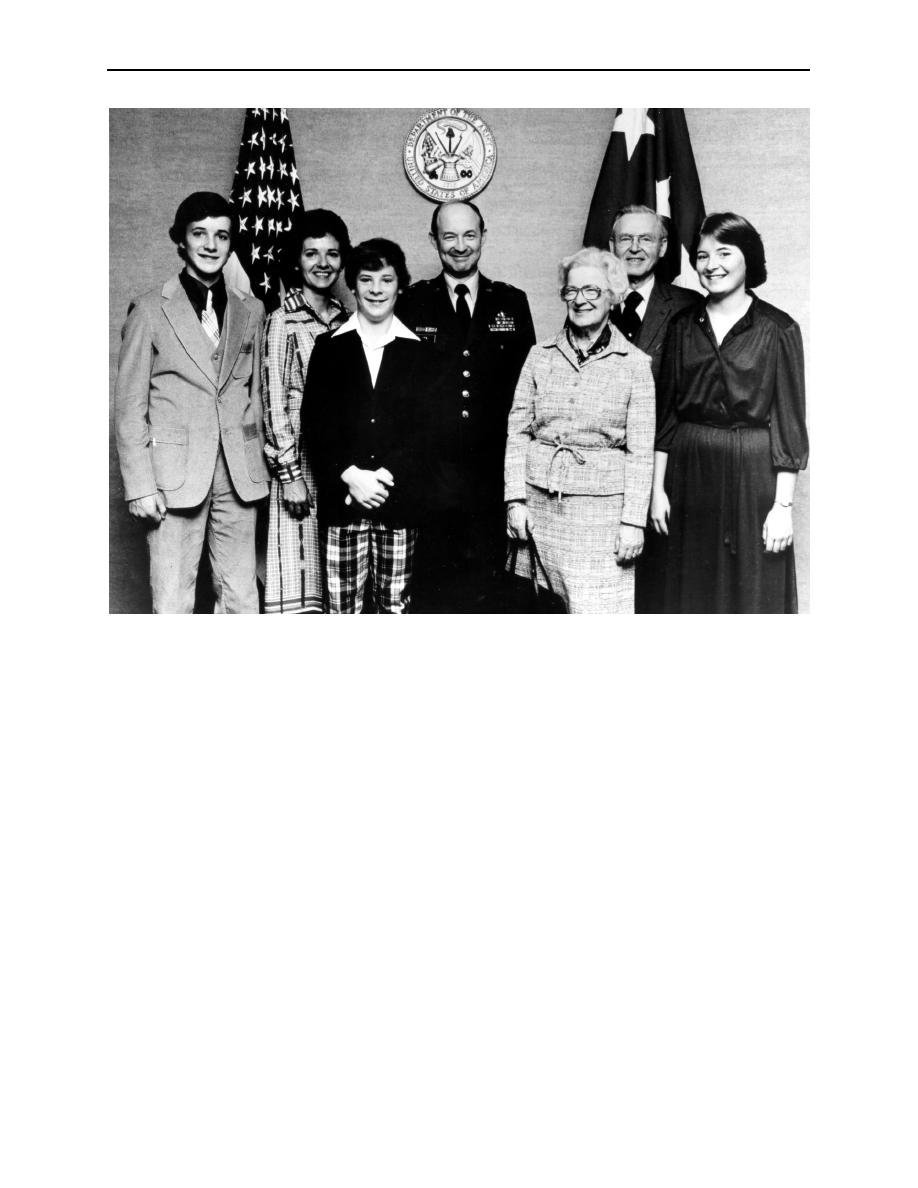
________________________________________________________________________Richard S. Kem
General Kem's wife, children, and parents at his promotion to brigadier general in
November 1979. From left to right, John S. Kem, Ann Kem, Steven E. Kem, General
Kem, Mrs. Charles E. (Janice) Kem, Dr. Charles E. Kem, and Michelle Kem.
A:
Well, the Deputy ACE was a colonel's position. The fact was that the ACE really needed two
general officers to do the kind of high-level things that I've just described and to be on a par
with other deputy chiefs up there who all had four or five generals. They could always be
covered at a meeting by a general; the ACE was always short. I came in as a colonel and
that's what I was expected to be. I brought the experience with me, but as luck would have it,
about a month after I arrived I was on the brigadiers list. I was toward the top of the list, so I
was promoted the first part of November. Therefore, we now had two general officers, and so
we just had more clout. I mean, the way the Army Staff works is you sit by date of rank
around the table. The more rank you have, the closer to the front of the table where the action
is. When you have a table with 12 generals at it, and the colonels fill the end of the table or
the back rows, then it's nice to have two generals there to do the job.
We had a major as the executive officer for the office. The DCSOPS and DCSLOG were
much bigger and had colonel executive directors. They each had a deputy director who was a
two-star and then they'd have several other major general directorate heads. So, we were
really undergunned by only having a major. A major could run the office. He could be a
senior admin type, but not an executive officer in the sense of the way the Pentagon runs.
253


 Previous Page
Previous Page
